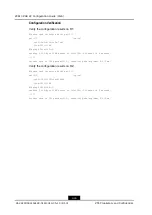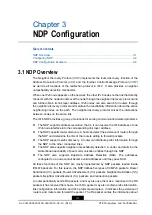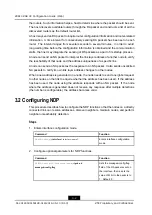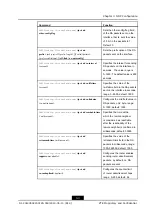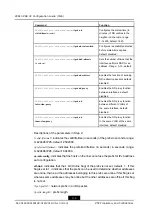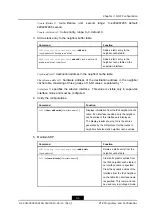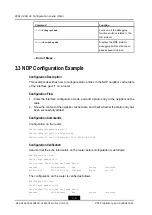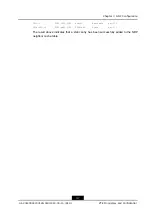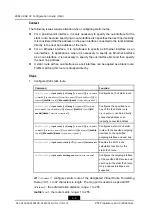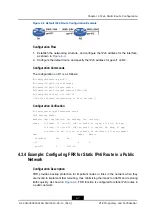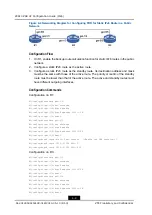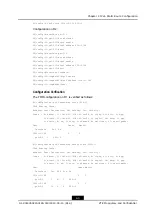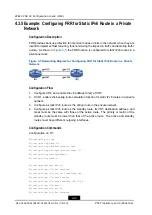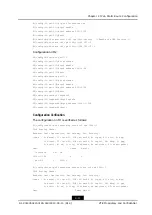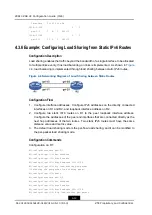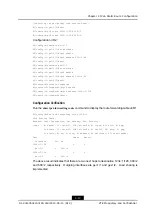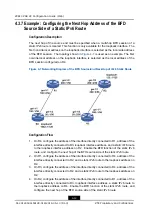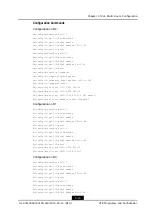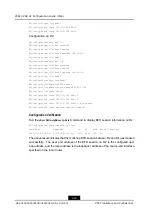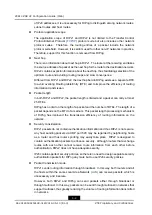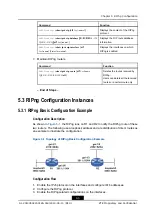
ZXR10 ZSR V2 Configuration Guide (IPv6)
Figure 4-2 Topology Diagram for Configuring a Static IPv6 Route (Indirect Next Hop)
Configuration Flow
1.
Configure a static route on R1, with the destination network segment 2003::/64 and
next hop 2005::2.
2.
Configure a static route on R1, with the destination network segment 2005::/64 and
next hop 2006::2.
Configuration Commands
Configuration on R1 (IPv6 address configurations on R1, R2, and R3 are omitted)
R1(config)#ipv6 route 2003::/64 2005::2
/*Configure the static route (indirect next hop).*/
R1(config)#ipv6 route 2005::/64 2006::2
/*Configure the static route (direct next hop).*/
Configuration Verification
R1#show ipv6 forwarding route static
IPv6 Routing Table:
Headers: Dest: Destination, Gw: Gateway, Pri: Priority;
Codes
: K: kernel, I1: isis-l1, SFN: sf-nat64, R: ripng, AF: aftr, B: bgp,
D: direct, I2: isis-l2, SLN: sl-nat64, O: ospfv3, D6: dhcp, P: ppp,
S: static, N: nd, V: vrrp, A: address, M: multicast, UI: user-ipaddr;
Dest
Owner
Metric
Interface
Pri
Gw
2003::/64
S
0
gei-2/1
1
2005::2
2005::/64
S
0
gei-2/1
1
2006::2
4.3.3 Example: Configuring a Default IPv6 Route
Configuration Description
The default route is a special kind of static route. When all routes in the routing table fail
to be selected, the default route, which greatly reduces the handling load of the router, is
used.
shows the topology structure of IPv6 default routes.
4-6
SJ-20140504150128-018|2014-05-10 (R1.0)
ZTE Proprietary and Confidential

